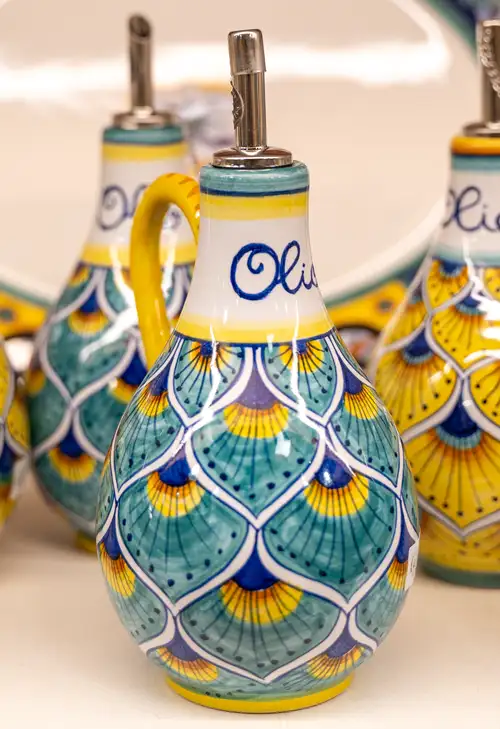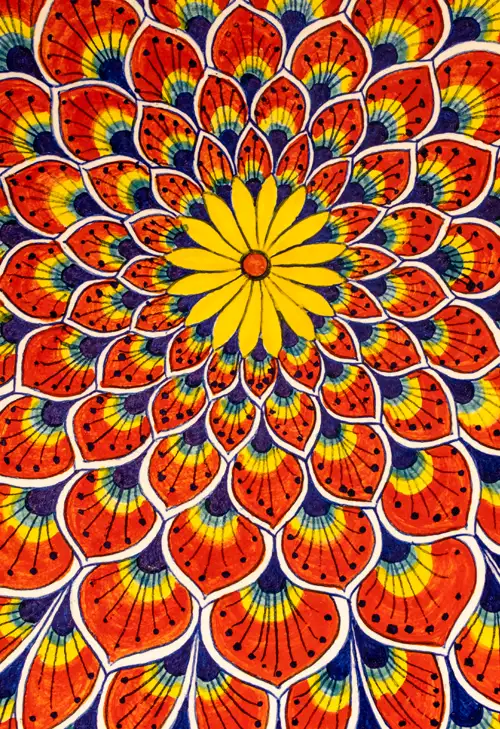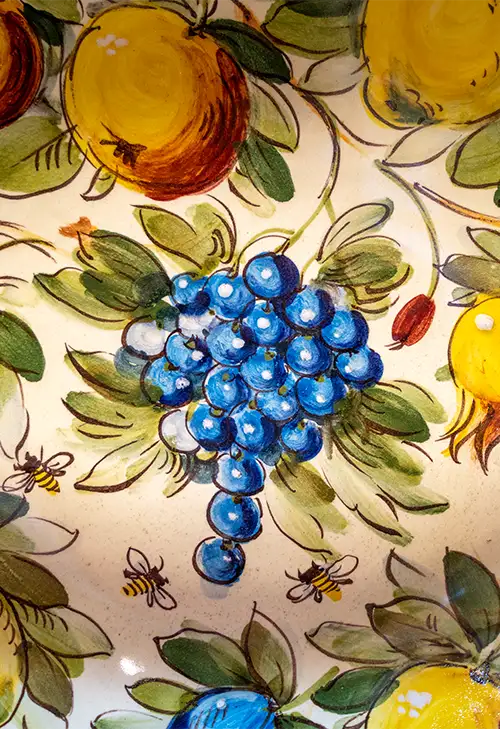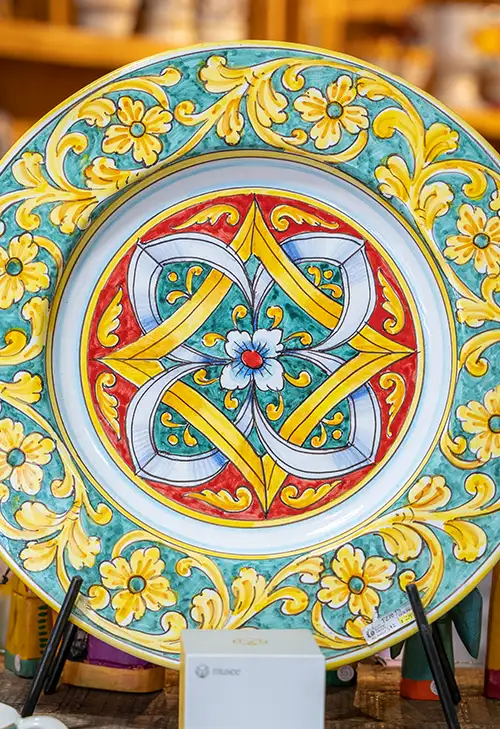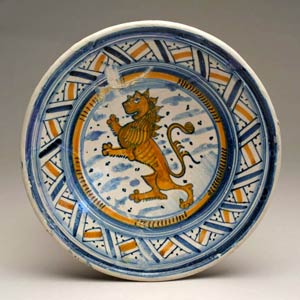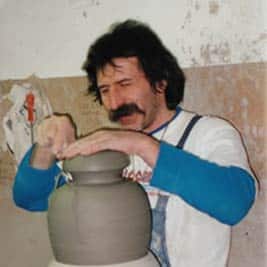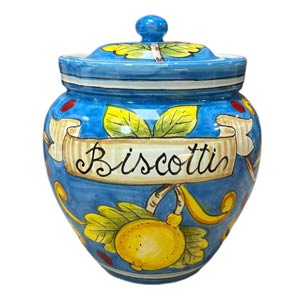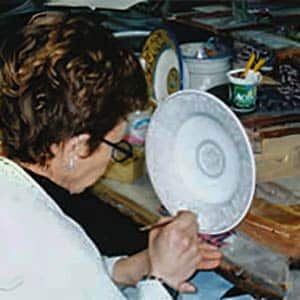The potter throws the shape on a potter’s wheel or presses it into shape using a mold.
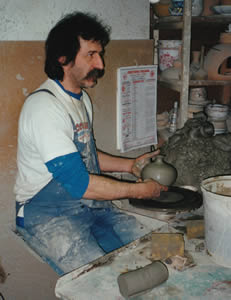
Throwing the pot
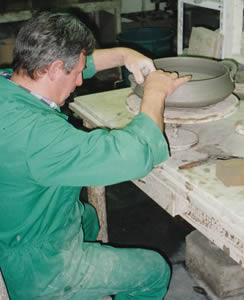
Applying handles with “slip”
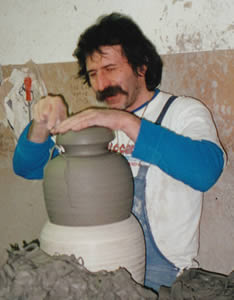
Perfecting the shape

The final piece is called “green ware”. It is left on racks in the open to dry until the color changes from a greenish-gray to a light-gray color.
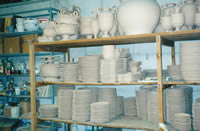
When dry, the piece is put into the kiln for its first firing at 1890º Fahrenheit (1032º Celcius). At this stage, after the first firing, the item is called bisque and the color changes to terracotta red.
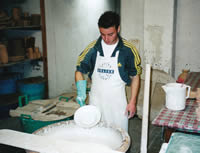
After the piece is cooled the bisque is dipped into a liquid glaze called “primo bianco”.

The artist paints the desired decoration on the white surface. The design is either painted freehand or with the use of a type of stencil. This stencil is a thin piece of paper with small holes punched out along the edge of the design.
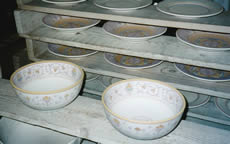
The artist lays the design on the piece and then gently taps it with a “spolvero” a bag of charcoal dust that marks the design. The glazes used to paint the decoration do not appear in their true colors, making it very difficult to paint the finished product.
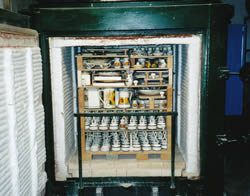
The final step is the second firing at 1690º Fahrenheit (921º Celcius) and takes up to 24 hours.
If you have always wanted to try it yourself, there is now a school of ceramics in Deruta. They offer courses that are designed specifically for the student. You can learn to paint without laboring over a potter’s wheel!



